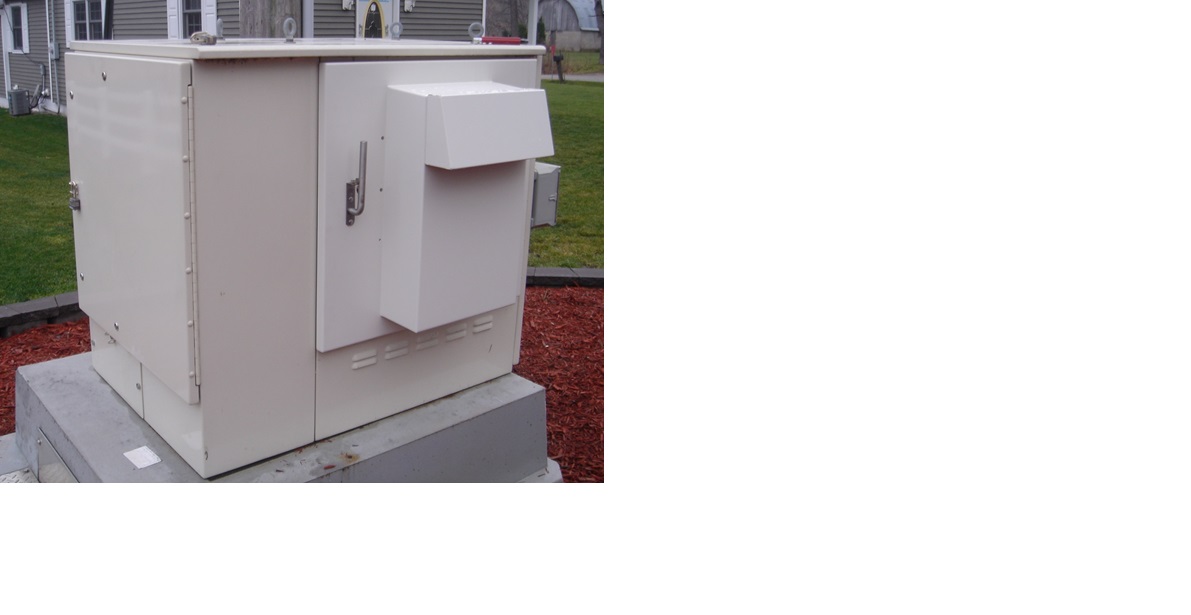News Single
Focus On Connecting And Cooling
Cabinet Cooling Technologies
- 2017-12-11
| Two-Phase Closed Thermosyphon Introduction |
||||
| The two phase closed thermosyphon is a simple but effective heat transfer device. It is a vertically oriented wickless heat pipe with a pool at the bottom. The thermosyphon is described by dividing it into three sections (Japikse, 1973) as shown in Fig. 1. Heat is supplied at the bottom evaporator section, where the liquid pool exists and it is utilized to convert the working fluid into a vapor. The vapor rises and passes through the adiabatic section to the top condenser section.
In the condenser section, the vapour condenses and gives up its latent heat. The gravity effect returns the condensate back to the evaporator. Due to high efficiency, reliability and cost effectiveness, the thermosyphons are being used in many applications. Some of the common applications of heat pipe include turbine blade cooling, waste heat recovery, heat exchanger fins, electrical motor cooling, transformer cooling, nuclear reactor cooling, cryogenic cool down apparatus, cooling of internal combustion engines etc., (Faghri, 1995). For the past many years a considerable experimental and theoretical work have been carried out on the application and design modification for improving thermosyphon performance. Khandekar et al. (2008) analyzed thermal performance of closed two phase thermosyphon using various water based nanofluids as the working fluids. Jiao et al. (2008) has developed a comprehensive steady state model considering five forms to investigate the effect of filling ratio on the heat transfer performance of a vertical two phase closed thermosyphon. Chang et al. (2008) used a vapor chamber as an evaporator and studied three factors that influence the thermal performance of the cooling system.Noie (2005) considered the aspect ratio and filling ratio on the thermal performance of the thermosyphon with water as the working fluid.Vasiliev (2004) analyzed different types of heat pipe design for electronic cooling. Haider and Joshi (2002) proposed an analytical approach to model a closed two phase thermosyphon. Park et al. (2002) studied the heat transfer characteristics of a two phase closed thermosyphon using FC-72 (C6 F14) as the working fluid. Cao and Gao (2002) employed the concept of boiling heat transfer mechanism in a narrow space in the two flat plate wickless network heat pipes with water and methanol as the working fluids. Payakaruka et al. (2000) investigated the effects of bond numbers, froude numbers, weber numbers and kutateladze numbers on the heat transfer rate and total thermal resistance. EI-Genk and Saber (1999) developed the correlation to calculate the expanded pool height in the evaporator for the acetone, ethanol and water in the closed two phase thermosyphons. Dobson (1998) observed the two phase flow in a metal thermosyphon by using air and water in a Perspex tube. Nakano et al. (1998) studied the heat transfer characteristics, the thermal resistance and maximum heat transfer rate of a nitrogen thermosyphon over a large dynamic range from near the triple point to the critical point. Lin and Faghri (1997) analyzed a one dimensional mathematical model for natural circulation two phase flow in a thermosyphon with the tube separator. Monde (1996) studied the critical heat flux of a two phase thermosyphon. Zuo and Gunnerson (1994) studied the effects of operating temperatures, geometry, working fluid inventory and condenser thermal capacity of two phase closed thermosyphon. Lock and Fu (1993)investigated the performance of an offset, evaporative thermosyphon aligned vertically. Li et al. (1991) studied the performance of closed thermosyphons charged with fluids R11, R22 and water operating at low temperature differences between evaporator and condenser section. Bontemps et al. (1989) tested the large dimension, inclined closed two phase thermosyphon for the temperature range of 100 to 300°C with toluene as the working fluid. Hahne and Gross (1981) investigated the effect of inclination angle on the closed two phase thermosyphon. Imura et al. (1977) studied the heat transfer characteristics in a closed-type thermosyphon with water and ethanol as working liquids. |
||||
Search
Categories
Contact Us
- Address: CHN SITE : Huizhou, GuangDong , China
- Phone: +00852-36283398
- Email: sales@jade-thermalloy.com
-
Monday - Friday: 9:00 am - 10:00 pm
Saturday - Sunday: Closed
Say Hey
LiveChatclose



